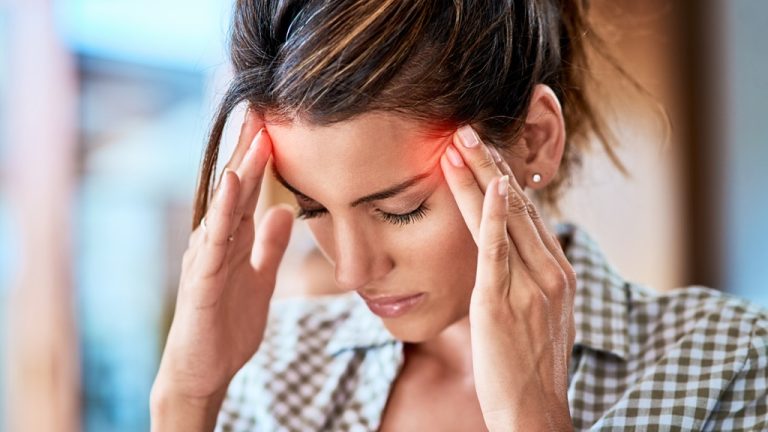Chronic migraines are more than just a headache. They are debilitating, often interfering with daily life, and can leave you feeling exhausted, isolated, and desperate for relief. With the World Health Organization ranking migraines as one of the most disabling conditions globally, it’s clear that the impact of chronic migraines is far-reaching. However, despite the challenges, there are ways to manage and even find long-term relief. In this post, we’ll explore effective strategies and treatment options that can help individuals living with chronic migraines lead fuller, more comfortable lives.
Understanding Chronic Migraines
Before diving into treatment options, it’s essential to understand what chronic migraines are. A migraine is defined as a severe headache that is often accompanied by other symptoms such as nausea, vomiting, sensitivity to light and sound, and dizziness. When migraines occur 15 or more days per month for at least three months, they are classified as chronic migraines.
These frequent migraines can be triggered by various factors, including stress, hormonal changes, certain foods, environmental factors, and even genetic predisposition. The exact cause of chronic migraines remains unclear, but researchers are continually discovering more about the mechanisms behind these intense headaches.
1. Identifying Triggers
One of the first steps in managing chronic migraines is identifying and avoiding triggers. Keeping a migraine diary can be incredibly helpful in pinpointing what might be causing your episodes. Record the frequency, intensity, and duration of each migraine, along with any potential triggers you encountered that day—such as foods, stress levels, weather changes, or lack of sleep. Over time, patterns may emerge, helping you to minimize or eliminate triggers that are under your control.
Common migraine triggers include:
- Certain foods: Chocolate, alcohol, cheese, and processed meats are known triggers.
- Sleep disturbances: Both lack of sleep and oversleeping can cause migraines.
- Stress: Emotional and physical stress is one of the most common triggers.
- Bright lights or strong smells: Environmental factors such as bright lights or perfumes can cause migraine flare-ups.
- Hormonal fluctuations: For women, migraines can often be linked to hormonal changes, particularly during menstruation.
By managing triggers, you may be able to reduce the frequency of your migraines or prevent them entirely.
2. Medication Options
When it comes to managing chronic migraines, medication plays a central role in both the acute treatment and long-term prevention of migraine attacks.
- Acute treatments: These are taken during a migraine episode to relieve symptoms. Over-the-counter pain relievers such as ibuprofen or aspirin can be helpful, but stronger medications may be necessary for severe attacks. Triptans, a class of drugs that target the serotonin receptors in the brain, are often prescribed for acute migraine relief. Other medications, like anti-nausea drugs, may be used in conjunction with pain relievers to address other symptoms.
- Preventive treatments: For people with chronic migraines, preventive medications can help reduce the frequency and severity of migraines. These may include beta-blockers, antidepressants, antiepileptic drugs, or certain blood pressure medications. Botulinum toxin (Botox) injections in Astoria have also been shown to help prevent chronic migraines by reducing the intensity and frequency of attacks.
While medications can be effective, they are not always a perfect solution. Side effects, drug interactions, and individual responses vary, so working closely with a healthcare provider is essential in finding the right regimen.
3. Alternative Therapies and Lifestyle Adjustments
In addition to medications, there are several alternative therapies and lifestyle changes that can be incredibly beneficial for individuals living with chronic migraines.
- Cognitive Behavioral Therapy (CBT): CBT is a form of psychotherapy that focuses on identifying and changing negative thought patterns and behaviors. For people with chronic migraines, CBT can help manage stress and improve coping skills, which can significantly reduce the frequency and severity of migraine episodes.
- Physical Therapy: Sometimes, chronic migraines are linked to issues with posture, neck, and back strain. Physical therapy can help address musculoskeletal problems that may be contributing to migraine pain. Techniques like massage, stretching, and posture correction can relieve tension in the muscles, potentially reducing migraine occurrences.
- Biofeedback and Relaxation Techniques: Biofeedback teaches individuals to control bodily functions such as heart rate and muscle tension. Learning to relax through biofeedback or other methods like meditation and deep breathing can help reduce the intensity and frequency of migraines. Stress reduction is a powerful tool in managing chronic migraines, and relaxation techniques can be an essential part of your treatment plan.
- Acupuncture: Acupuncture, the traditional Chinese medicine practice of inserting thin needles into specific points on the body, has been shown to help reduce migraine frequency and severity. While the scientific evidence is still emerging, many people report positive results from acupuncture treatments.
- Diet and Hydration: A well-balanced diet and staying properly hydrated can go a long way in reducing migraine risk. Low blood sugar and dehydration are common migraine triggers. Eating small, frequent meals throughout the day and drinking plenty of water can help keep migraines at bay. Additionally, certain supplements, such as magnesium, riboflavin, and coenzyme Q10, have been shown to reduce the frequency of migraines.
4. Support and Education
Living with chronic migraines can be isolating, but support from others can make a significant difference in managing the condition. Joining a support group, whether in person or online, allows individuals to share experiences, coping strategies, and resources. Educating family and friends about your condition can also foster understanding and empathy, helping you feel more supported in your daily life.
Final Thoughts
Finding long-term relief from chronic migraines often requires a multi-faceted approach. While there may be no single cure, a combination of preventive treatments, lifestyle changes, and alternative therapies can help you take control of your migraines and improve your quality of life. If you’re living with chronic migraines, don’t lose hope. With the right care plan and support, it’s possible to manage your condition and find relief that works for you. Always consult with a healthcare provider to determine the best course of action for your specific needs.

